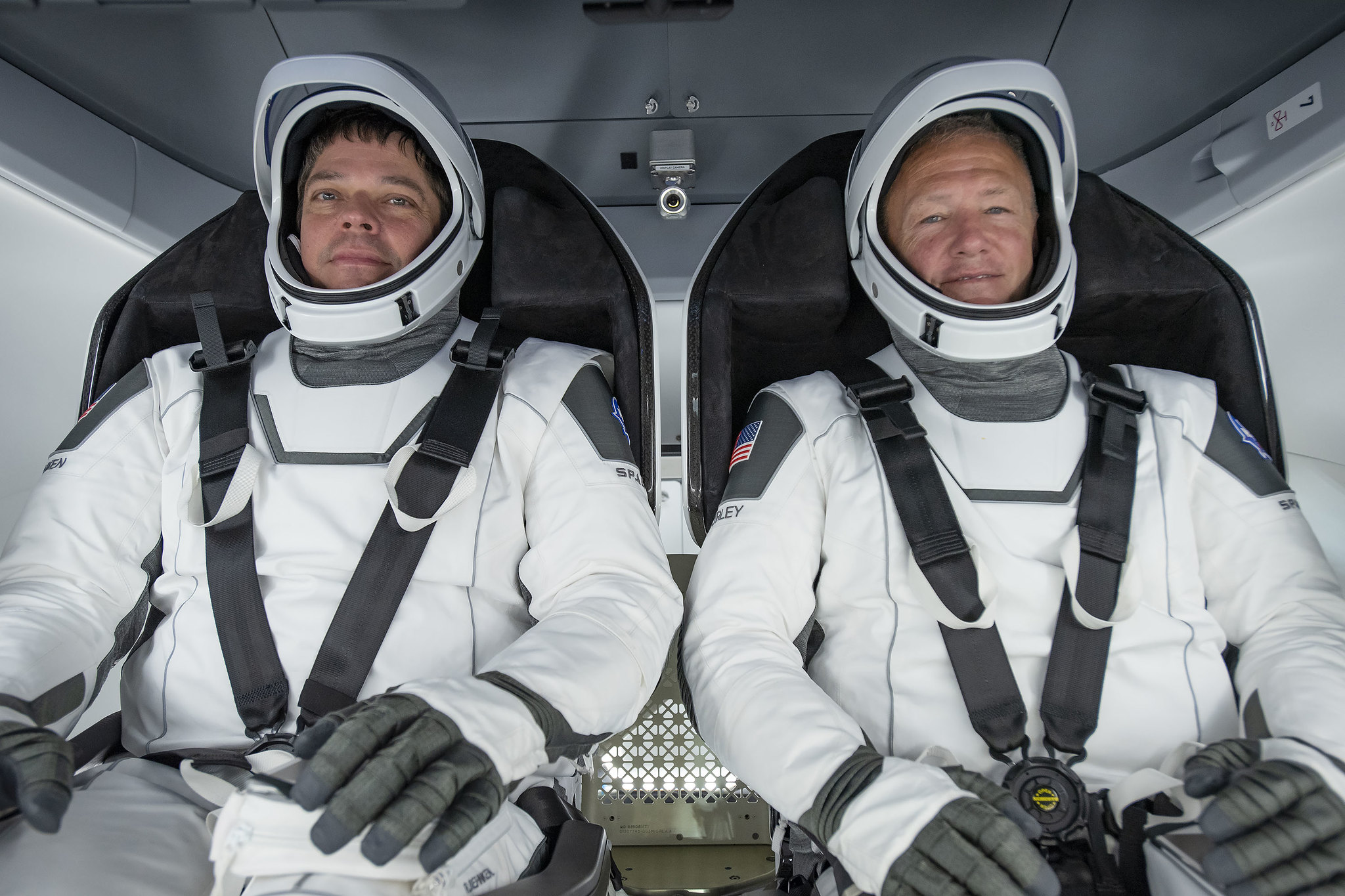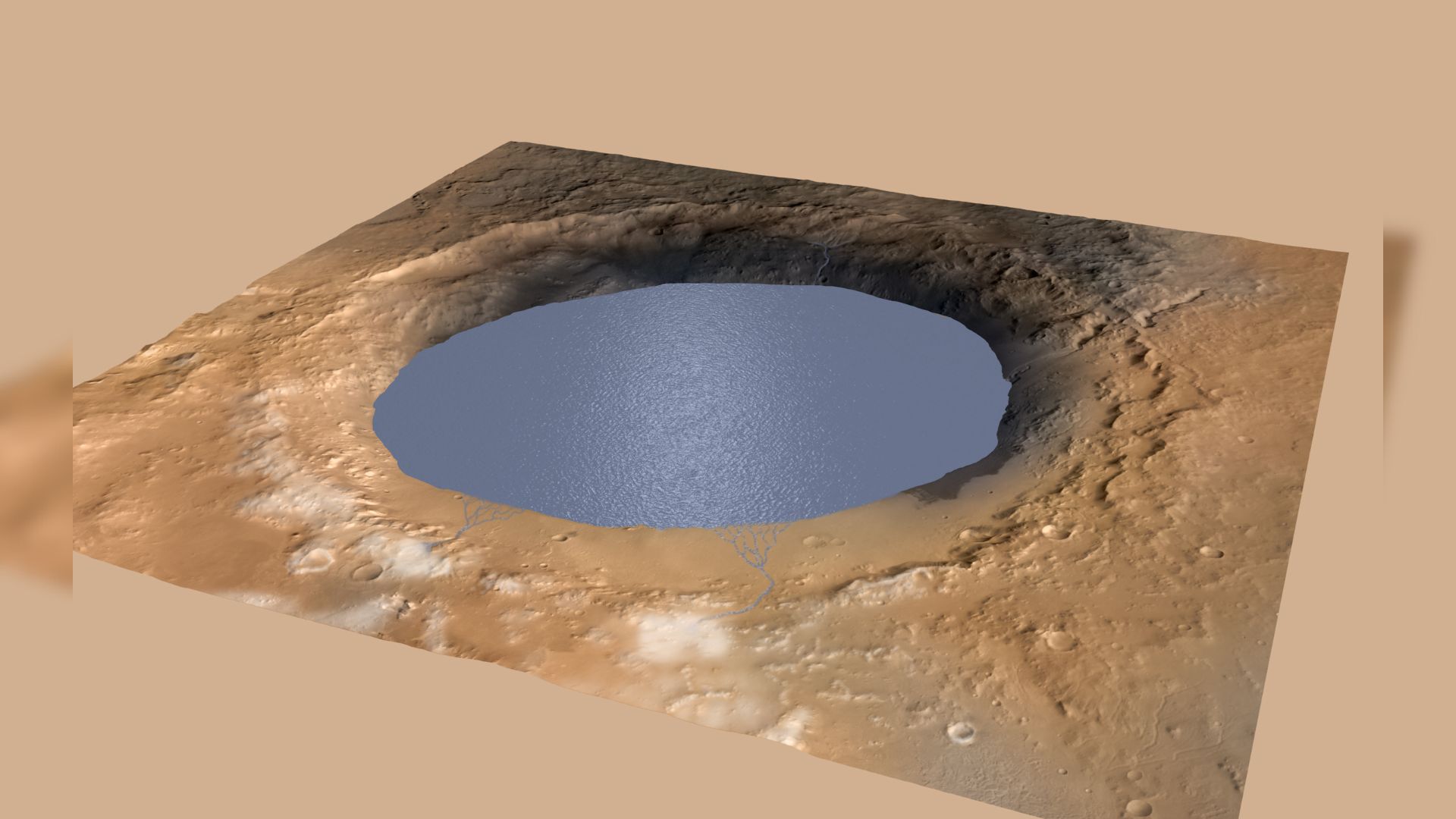How long will the 1st astronauts to ride SpaceX's Crew Dragon be in space? No one knows exactly (yet).
Two NASA astronauts will make history this month when they become the first crew to fly to the International Space Station in a private spacecraft. But exactly how long their historic mission will last has yet to be determined.
On May 27, astronauts Doug Hurley and Bob Behnken will board SpaceX's Crew Dragon spacecraft and launch toward the orbiting laboratory. The test flight is scheduled to lift off on a Falcon 9 rocket at 4:32 p.m. EDT (2032 GMT), and If all goes according to plan, the capsule will dock with the station about 19 hours later.
While NASA and SpaceX have been planning this Crew Dragon Demo-2 mission for years, there is one key aspect of this mission for which they do not yet have a plan: the amount of time that the astronauts will spend in space before heading back to Earth.
Related: Take a walk through SpaceX's Crew Dragon spaceship
Behnken and Hurley could spend anywhere from one month to 119 days at the International Space Station, but the exact duration of their mission won't be determined until they are already in orbit, NASA officials said in a mission briefing on Friday (May 1). So, they could be returning to Earth at the end of June or as late as Sept. 23.
To decide on a date for the return flight, NASA and SpaceX will be evaluating not only the state of the Crew Dragon spacecraft in orbit, but also the progress on SpaceX's Crew-1 capsule. That vehicle will carry the first operational flight of a Crew Dragon spacecraft, which will transport four astronauts of the Expedition 63/64 crew to the International Space Station. (So far, no launch date has been set for the Crew-1 mission; Demo-2 must return safely before Crew-1 will be able to fly.)
"Really the decision point is, hey, is Dragon healthy? Is the vehicle performing well, the Dragon that's on orbit? And then we'll be looking ahead to that next mission, the Crew-1 flight, and looking at the vehicle readiness and trying to determine what's the smart thing to do relative to the mission duration," Steve Stich, deputy manager of NASA's Commercial Crew Program, said at the mission briefing.
Breaking space news, the latest updates on rocket launches, skywatching events and more!
"It's a little bit of a variable, but it's one that I think we can manage well," Stich said of the Crew-1 capsule status. "We would like to fly a mission that is as long as we need to for a test flight but also support some of the space station program needs and augment their crew capability to do science in other operations at the station."
Regardless of how the timing works out with the arrival of the Crew-1 mission, the Crew Dragon used for the Demo-2 mission cannot stay docked with the station for more than 119 days, Stich said, because its solar arrays are not designed to withstand degradation in space for more than 120 days.
"Any solar array in low Earth orbit tends to degrade a little bit over time," Stich said. "It turns out the atmosphere has a little bit of oxygen in it — it's called atomic oxygen — and so there's a little bit of degradation in the ability for the cells itself to generate power. And the particular cells on the trunk for a Dragon, based on analysis capability, kind of a worst-case prediction, we think we can get about 120 days capability out of those."
However, the operational version of the Crew Dragon spacecraft, like the one that will fly the Crew-1 mission, is designed to last 210 days in space. That matches the on-orbit lifespan of Russia's Soyuz crew capsules, which have ferried NASA astronauts to and from the space station since the space shuttle program ended almost a decade ago.
The Demo-2 mission comes a little over a year after SpaceX successfully launched an unpiloted Crew Dragon spacecraft to the International Space Station for the Demo-1 mission. If all goes well with Demo-2, SpaceX could begin regularly ferrying astronauts to and from the orbiting lab as early as this summer.
- SpaceX's Crew Dragon space capsule explained (infographic)
- 'Uphill battle': SpaceX overcame obstacles on road to historic 1st crew launch
- SpaceX celebrates Crew Dragon's 1st launch anniversary with epic video
Email Hanneke Weitering at hweitering@space.com or follow her @hannekescience. Follow us on Twitter @Spacedotcom and on Facebook.
OFFER: Save 45% on 'All About Space' 'How it Works' and 'All About History'!
For a limited time, you can take out a digital subscription to any of our best-selling science magazines for just $2.38 per month, or 45% off the standard price for the first three months.

Hanneke Weitering is a multimedia journalist in the Pacific Northwest reporting on the future of aviation at FutureFlight.aero and Aviation International News and was previously the Editor for Spaceflight and Astronomy news here at Space.com. As an editor with over 10 years of experience in science journalism she has previously written for Scholastic Classroom Magazines, MedPage Today and The Joint Institute for Computational Sciences at Oak Ridge National Laboratory. After studying physics at the University of Tennessee in her hometown of Knoxville, she earned her graduate degree in Science, Health and Environmental Reporting (SHERP) from New York University. Hanneke joined the Space.com team in 2016 as a staff writer and producer, covering topics including spaceflight and astronomy. She currently lives in Seattle, home of the Space Needle, with her cat and two snakes. In her spare time, Hanneke enjoys exploring the Rocky Mountains, basking in nature and looking for dark skies to gaze at the cosmos.



